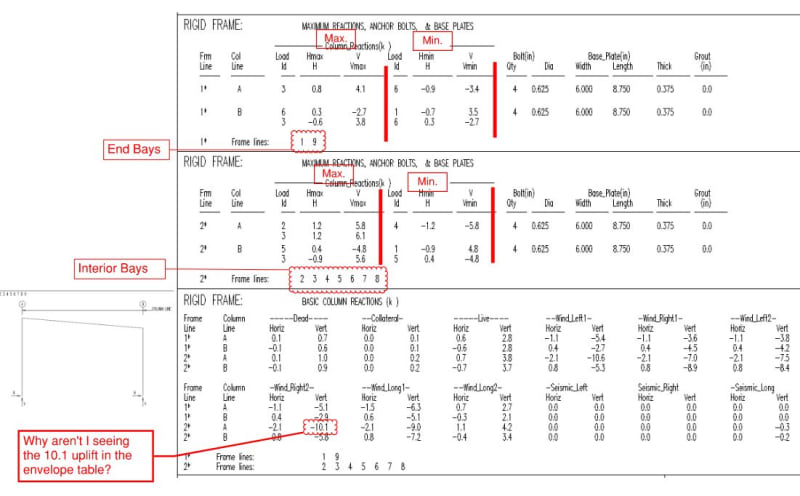JoelTXCive
Civil/Environmental
We are designing the foundations for a carport-like canopy for equipment storage.
I'm having difficulty understanding the column reaction tables provided by the pre-engineered building company.
Please see below. They provide one table purporting to show the 'Maximum (& Minimum) Reactions, Anchor Bolts & Base Plates'. It's my understanding that this table has factored loads.
Additionally, they provide a 'Basic Column Reaction' Table. It's my understanding that this table contains raw un-factored loads.
It seems to me that a lot of the unfactored loads are larger than the factored loads?
Maybe I'm not understanding the tables correctly? This looks like canned software. Is anyone familiar with these tables? (the redlines are made by me and not the PEMB company)

Thank you!
I'm having difficulty understanding the column reaction tables provided by the pre-engineered building company.
Please see below. They provide one table purporting to show the 'Maximum (& Minimum) Reactions, Anchor Bolts & Base Plates'. It's my understanding that this table has factored loads.
Additionally, they provide a 'Basic Column Reaction' Table. It's my understanding that this table contains raw un-factored loads.
It seems to me that a lot of the unfactored loads are larger than the factored loads?
Maybe I'm not understanding the tables correctly? This looks like canned software. Is anyone familiar with these tables? (the redlines are made by me and not the PEMB company)

Thank you!
